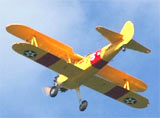
Aviation GPS is now commonly used throughout the world to compensate for many of the inadequacies in today’s air traffic system. Satellite navigation provides a primary navigation service that meets many of the requirements of users around the globe. Accurate aircraft position can be determined anywhere near or on the surface of the earth with satellite navigation – ground-based equipment cannot do that.
Implementation
The implementation of aviation GPS provides many benefits to aviation transportation:
- Enhanced flight safety
- Consistent navigation service between regions through standardization
- Greater system capacity through reduced separation minimums
- Considerable savings from decreased flight times and less fuel consumption
- Significant savings from reduced operation and maintenance of unnecessary ground-based systems
GPS is common in light aircraft cockpits and GPS systems are certified for en route IFR (instrument flight rules) as well as nonprecision approaches. The FAA has put together a phase out plan for most non-GPS forms of electronic navigation. GPS can not be used as the only means of navigation until GPS III when all the satellites are replaced. This project will not yield benefits until at least 2011.
The FAA has granted pilots who navigate in oceanic airspace and selected remote areas the approval to use GPS as the only means for navigation. Also, aircraft equipped with a WAAS-enabled receiver can use WAAS as a primary means of navigation.
Aviation GPS and VOR
In aircraft, GPS shows position similar to the way VOR does – relative to a selected course. This information is what aviators have used for years. Aviation GPS also shows position on a moving map (chart) along with altitude above terrain. The main differences between GPS and VOR are:
- Because GPS is computer-based navigation, it provides many features not available with VOR.
- GPS receivers use a sequence of waypoints and provide navigation data to each waypoint in that sequence. This is called “autosequencing” and files of waypoints are known as �flight plans.�
- VOR receivers show angular deviation from a selected course. This means the closer the aircraft is to a VOR transmitter the more sensitive the course indication. Aviation GPS gives course deviation in nautical miles (nm) off course. During navigation, the GPS will show � 5 nm each side of course centerline. The GPS will gradually increase sensitivity the closer an aircraft is to a destination airport.
- Instrument approaches with GPS are relatively easy to execute but any interruption of the waypoint sequence can mean more work for the pilot close to the ground.
Accuracy and reliability
Accuracy for most aviation GPS receivers is less than 15 meters and if the unit has WAAS, accuracy can be less than 3 meters. Receiver Autonomous Integrity Monitoring (RAIM) is protection against GPS errors. RAIM is mandatory on all IFR approved GPS receivers. RAIM works by determining position using at least five satellites or four satellites and barometric altitude input from an altimeter. The unit will give an alarm if it senses that one or more satellites is transmitting questionable data.
Aviation GPS Receivers
Since the advent of IFR-approved GPS receivers in the mid 1990s, technology has improved. The first models had numerical-only displays – now color displays with moving maps and multifunction displays are standard. Many of these units also have VHF radios that automatically access the GPS database for proper frequencies.
The cost of an IFR certified GPS receiver starts at about $3,000 plus at least $350 for required database revisions annually. Many early GPS receivers are available today. They are just as accurate as the new models but they don’t have the automation and ease of use.